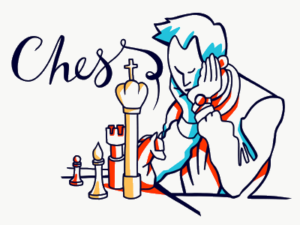 When it comes to the world of betting, few sports have changed as little since they were first invented as chess. It’s also one of the games that requires the least amount of physical energy being expended by the players, though it’s worth noting that the mental energy that they put in far outweighs almost every other sport you can bet on. Don’t let that fool you into thinking that it is a boring event to bet on, however. Chess matches can be just as tense and competitive as the most high-stakes of football games.
When it comes to the world of betting, few sports have changed as little since they were first invented as chess. It’s also one of the games that requires the least amount of physical energy being expended by the players, though it’s worth noting that the mental energy that they put in far outweighs almost every other sport you can bet on. Don’t let that fool you into thinking that it is a boring event to bet on, however. Chess matches can be just as tense and competitive as the most high-stakes of football games.
The numbers alone might suggest that there’s not much to get excited about. Two players sit across a chess board from one another, having 64 squares on which to move around 16 pieces each. The excitement comes in the fact that there are countless different variations of moves that the players can make, meaning that a match isn’t truly over until checkmate has been called or the losing player has knocked over their king. Whilst some sports require remarkable physical dexterity and fitness to be played, chess needs nothing more than the ability to indicate where pieces should be moved and the mental capacity to think a few steps ahead. A true leveller.
Best Online Bookmaker For Chess Betting
Unibet

When it comes to a sport like Chess you really have to bet with the big bookies to get a choice of markets. Even then many sites do not offer chess bets year round, with one exception - Unibet.
Unibet are not only a big player but they are also more modern than many of the high-street giants and this means they tend to provide a wider choice, and critically year round.
The best place to bet ante-post for certain and generally their odds and always in line, or better than, comparable bookies.
How To Bet On Chess
Typically you will want to bet on one of three things when you’re placing a wager on a chess match: Whether the ‘home’ player will win; whether the ‘away’ player will win; whether the match will end in a draw.
Some bookmakers might offer you the ability to bet on matches with handicaps, such as a player being a game down before the match has even begun. You will also be able to bet on the winner of the tournament overall.
It really isn’t much more complicated than that, though the variations on who will win and how they will win are numerous.
The Origins Of Chess
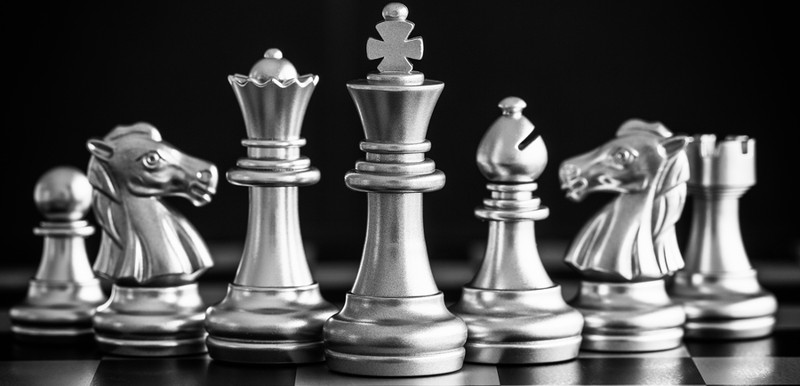
It was the 6th century AD in India when chess was played for the first time. It quickly spread into Persia and then, when the country now known as Iran was taken over by the Arabs, the game moved into the Muslim world. As the Moors moved in to conquer Spain they took chess with them, introducing the game to Southern Europe. The rest, as they say, is history.
We are jumping slightly ahead of ourselves there, however. The game has its origins in another one by the name of Chaturanga, which translates as ‘the four divisions’. There were:
- Infantry
- Cavalry
- Elephantry
- Chariotry
Those of you that have a vague knowledge of the game of chess will already have spotted the origins of what would later become the pawns, knights, bishops and rooks. When the game moved into Persia it developed into Chatrang, complete with a development of the rules. Players would shout ‘Shāh!’ when they threatened their opponent’s king, with ‘Shah’ being Persian for ‘King’. If they got the king into a position that it could not escape then they would instead shout ‘Shāh māt!’, which translates roughly to ‘the King is finished!’
You can obviously see the origins of the idea of check and checkmate there. In Arabic it took on the name Shatranj, with all other languages deriving the name of the game from Shatranj or shah.
The Game Develops
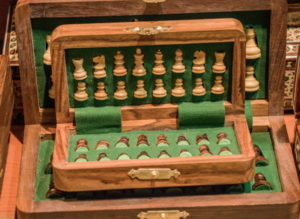 It was when the game moved into Europe that it began to see its biggest changes take place. Europeans had not really seen elephants at the time and they certainly weren’t used in battle, which is why that piece became a bishop. Here are the moves from the original Sanskrit into English:
It was when the game moved into Europe that it began to see its biggest changes take place. Europeans had not really seen elephants at the time and they certainly weren’t used in battle, which is why that piece became a bishop. Here are the moves from the original Sanskrit into English:
- Raja (King) – King
- Mantri (Minister) – Queen
- Hasty / Gajah (Elephant) – Bishop
- Ashva (Horse) – Knight
- Ratha (Chariot) – Rook
- Padati (Footsoldier) – Pawn
Part of the development was the move away from the Indo-Arabic game of its origin and into the game that we understand and recognise today. The changeover mainly took place in the final decades of the 15th century as the world moved from the medieval to the modern. Here’s a look at the difference between the two sets of rules:
| Piece | Arabic Move | Modern Move |
|---|---|---|
| Shah / King | One square in any direction | Same |
| Firzān / Queen | One square diagonally | Any direction, any number of spaces |
| Fil / Bishop | Two squares diagonally, ability to jump pieces | Any number of spaces diagonally |
| Ashva / Knight | One forward and two to either side or two forward and one to either side, can jump pieces | Same |
| Rukh / Rook | Forwards or backwards any number of spaces | Same |
| Baidaq / Pawn | One square forwards, capturing diagonally forward. Can only be promoted to become a Firzān | One or two steps forward if first move, otherwise one step forward. Moves diagonally forward to capture. Can be promoted to become any piece |
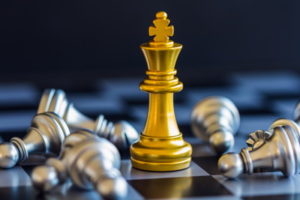 The rules of the game were changed and adapted in order to make it a faster enterprise from the start and so as to encourage contact between the two sides as quickly as possible. The king, for example, could jump over pieces once in order to make it safe in the corner of the board. This later developed into the ability to castle.
The rules of the game were changed and adapted in order to make it a faster enterprise from the start and so as to encourage contact between the two sides as quickly as possible. The king, for example, could jump over pieces once in order to make it safe in the corner of the board. This later developed into the ability to castle.
Instead of the slower paced opening of the Arabic and Persian versions of the game, chess became much more fast-paced at the beginning. Opening gambits and rapid attacks became the order of the day. Importantly, the only way to win the game became either via checkmate or resignation of the losing player. This meant that there were fewer ways to win than was previously the case and so draws became more common.
The Origins Of Competitive Chess
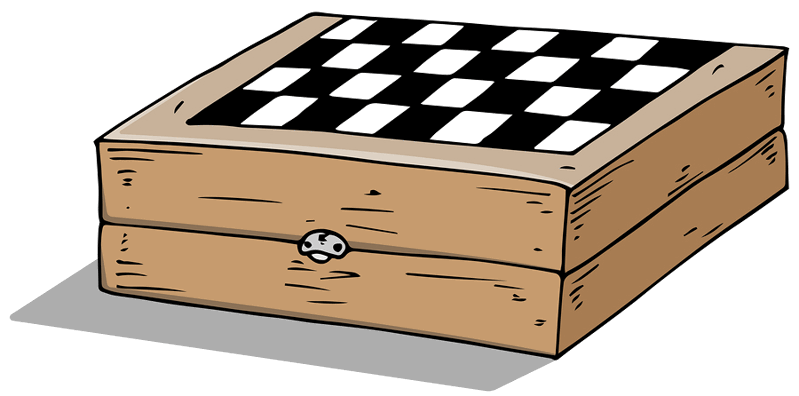
In terms of betting, one of the key things about the history of the game was the development of it as a truly competitive sport. Two players, LaBourdonnais and McDonnel, went up against each other in 1834 in what is widely considered to be one of the first truly competitive matches of the modern game that drew interest from the outside. 17 years later and the London Chess Tournament saw those responsible for its organisation begin to worry about how much time the players were taking to deliberate their moves; a sign that the interest had shifted towards how entertaining it was.
As a result of the London Chess Tournament of 1851, a variety of chess games began to become popular. 5 minute chess and speed chess are two such examples, though the post popular was one in which each player had a set amount of time to play a previously agreed number of moves; 3 hours for 40 moves, say.
 10 years later and sandglasses were used for the first time in a tournament in Bristol in order to impose a time limit on players to make their moves. These developed firstly into pendulums and then into clocks to ensure that there could be no arguments about players taking too long.
10 years later and sandglasses were used for the first time in a tournament in Bristol in order to impose a time limit on players to make their moves. These developed firstly into pendulums and then into clocks to ensure that there could be no arguments about players taking too long.
As something of an indication of how competitive chess had become, there were major debates over what would happen with the final move before a break for food or overnight. The player that played the final move would be at a disadvantage because their opposition would have a longer period of time to think over their final move. The result was the invention of the ‘sealed move’, in which the final player to make a move before a break would write their move down and hand it to the referee, with the move sealed in an envelope and not played until hostilities had resumed.
Chess Becomes A Sport
 The tournament in London in 1851 is widely considered to be the first modern day chess tournament. The early years saw numerous different styles of play, beginning with the energetic, attacking style of the first winner of the tournament, Adolf Anderssen. There then came a chess prodigy in the form of an American named Paul Morphy, who seemed to instinctively understand how to combine attacks with strategic moves.
The tournament in London in 1851 is widely considered to be the first modern day chess tournament. The early years saw numerous different styles of play, beginning with the energetic, attacking style of the first winner of the tournament, Adolf Anderssen. There then came a chess prodigy in the form of an American named Paul Morphy, who seemed to instinctively understand how to combine attacks with strategic moves.
Wilhelm Steinitz, a player from Prague, developed a style of play that allowed him to monitor weaknesses in his own positions at the same time as attempting to exploit those weaknesses in his opponent’s game. His victory over Polish-German player Johannes Zukertort in 1886 is thought to be the first official World Chess Championship.
At the end of the 19th century the number of master tournaments held on a yearly basis grew exponentially. Many believe that Tsar Nicholas II of Russia conferred the title of ‘Chess Grandmaster’ for the first time in 1914, though some dispute that. Regardless, the World Chess Federation was formed 10 years later and began handing out the title. The Women’s World Chess Championship was formed in 1927.
The Rules Of Chess Today
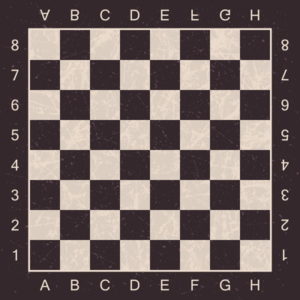 It is certainly fascinating to read about the early days of chess and how the game has developed, but in order to give ourselves the best chance possible of placing a successful bet it is important to know and understand the rules as they exist today. The problem, of course, is that there are not necessarily a set of rules that each chess tournament will follow. Whilst the rules of the actual game remains the same, there are certain variants from competition to competition.
It is certainly fascinating to read about the early days of chess and how the game has developed, but in order to give ourselves the best chance possible of placing a successful bet it is important to know and understand the rules as they exist today. The problem, of course, is that there are not necessarily a set of rules that each chess tournament will follow. Whilst the rules of the actual game remains the same, there are certain variants from competition to competition.
Each piece has a direction and number of spaces it is allowed to move, as outlined in the ‘The Game Develops’ section of this piece. For the purposes of ease we’ll look at the rules as outlined by the FIDE handbook on tournament play. There are nine distinct articles within the book, which we’ll summarise here:
The Clock
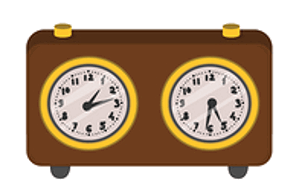 Typically, chess clocks have two timers. One is to monitor the time of the player with the black pieces and the other for the player with the white pieces. Players have a given amount of time to make their moves and the clock keeps track of how much time they have left.
Typically, chess clocks have two timers. One is to monitor the time of the player with the black pieces and the other for the player with the white pieces. Players have a given amount of time to make their moves and the clock keeps track of how much time they have left.
If a player overruns their time then their opponent can end the game. If it isn’t noticed then the game continues. Tournaments tend to have arbiters who are there to monitor the games for fairness. If one needs to be stopped for some reason then it is the job of the arbiter to stop the clock.
Irregularities
If the starting pieces were in the wrong place then a game will be cancelled. Equally if a player has made an illegal move then the game will be returned to the moment before the move was made. A second illegal move results in the game being lost.
Recording Moves
Players are responsible for recording their own moves. This remains the case unless a player has less than fives minutes left on the clock. At the end of the game each player signs the scoresheet of their opponent before they’re handed into the event’s organisers. Moves don’t need to be recoded in games of fast chess.
Drawing
A player needs to play their own move before offering their opponent a draw. If they do not so then their opponent can ask them to make a move before considering the offer. If the opponent accepts the offer then the game will be declared to be a draw.
A Quick Finish
If a player has two minutes or less left on their clock then they can ask the arbiter to declare the game to be a draw. If they rule against that then the player will be awarded an extra two minutes, provided they have been attempting to win the game.
Scoring
If a player loses then they get no points. A draw results in half a point being awarded and a win receives 1 point. Should someone receive a bye to the next round then they will get 1 point. Equally a player who wins by forfeiture or default also receives 1 point.
Conduct
No actions may be taken that will result in the game being brought into disrepute. It is now more and more common for players to forfeit the game if they have an electronic device which makes a noise. Players are also forbidden from receiving information from the outside world. Typical fair play, such as not trying to distract your opponent or annoy them, is expected of all players. Smoking has been banned in tournaments since 1976.
The Arbiter
The job of the arbiter, other than those already mentioned, is to ensure that the Laws of Chess are observed. This includes the likes of a player having to make their move once they have decided to touch a piece. They are also responsible for monitoring the audience, removing spectators from the arena if they do something such as use a mobile phone.
The Format Of Tournaments
 If you are considering which player you should bet on for a tournament then it is important to understand the format that it will be played to. There are three main options:
If you are considering which player you should bet on for a tournament then it is important to understand the format that it will be played to. There are three main options:
Round-Robin tournaments see each participant play all of the others an equal number of times. Oftentimes the players are ranked in order to separate them out into different round-robin ability groups. Usually these tournaments use the 1, half, 0 point system to decide upon a winner.
The Swiss System is often used for tournaments that have too many players for a round-robin system to be successful. In this system players are paired up with others of a similar ability, which is a complicated way of organising things. It is becoming more and more common for organisers off a chess tournament wishing to use the Swiss System to use computer software to separate the players. Points are awarded in the usual manner.
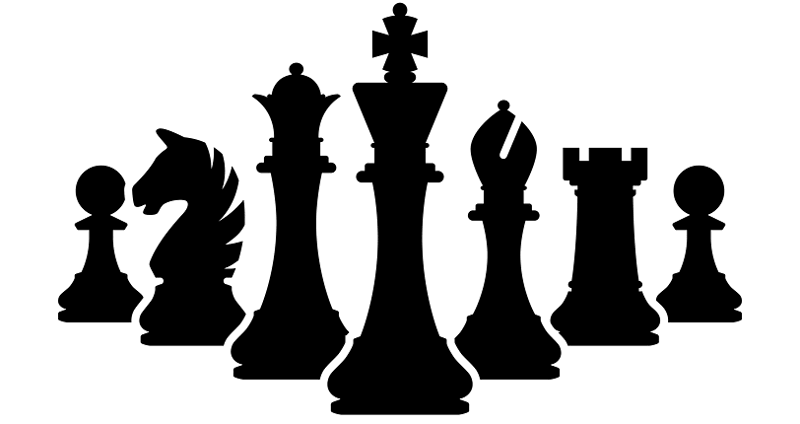
Finally, elimination style tournaments are ones that will be most recognisable to fans of the majority of competitive sports. Players will be seeded according to their ability in the hope that this will keep the best players separate from each other until the end of the competition. When a player loses a set number of games against their opponent they are eliminated.
Major Chess Tournaments

There are a much larger number of chess tournaments than you might realise if you are new to the sport. Here’s a look at those considered to the the most important:
FIDE Grand Prix Tournaments
These are important because the top two players get seeded for the candidate tournaments, the winner of which can challenge the World Champion.
World Cup
An elimination tournament that is considered to be a hugely important one to win, if for no other reason than the sheer number of competitors taking part in it mean that even top players are often knocked out early.
London Chess Classic
Not a world championship match, but one still considered to be important towards the rankings.
European Championships
There are variations of European Championship matches, such as the blitz and rapid tournaments.
The World Championship
Much as with the European Championship, there are rapid and blitz version of the World Championship.
